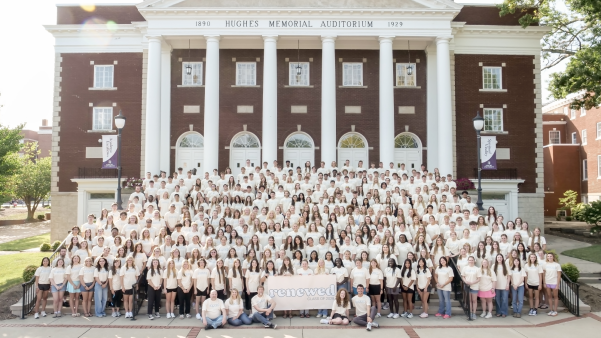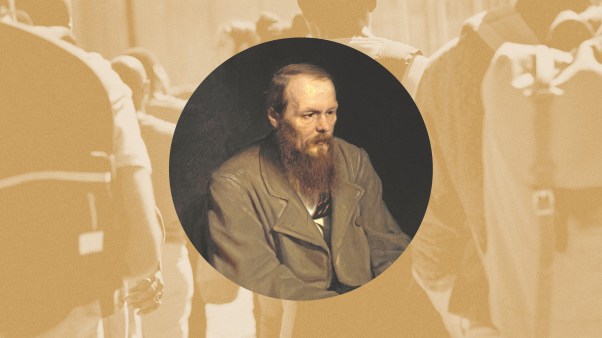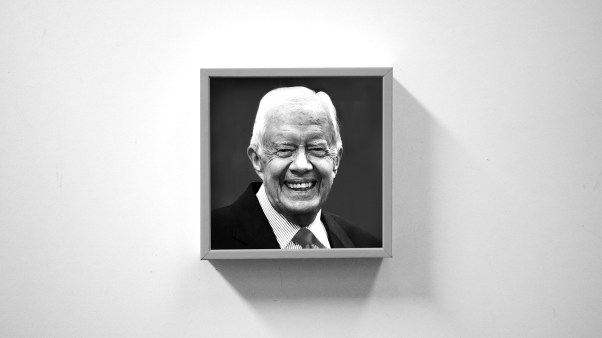The Council of Trent was convened by Pope Paul III on December 13, 1545—the year prior to Luther’s death—and lasted, with interruptions of three and ten years respectively, until December 4, 1563. Inasmuch as Pope Paul VI has just convened the second session of Vatican Council II, the 400th anniversary of the closing sessions of the Tridentine council deserves the attention of conservative Protestantism. The city of Trent stands in the southern and Italian part of Tyrol, seventy-three miles northwest of Venice. Not all sessions were held here, for in March, 1547, the council was transferred to Bologna, Italy, due to fear of a plague, though later it was reconvened at Trent, where the final and most important sessions took place. The council closed with the triple curse: “Anathema to all heretics; anathema; anathema”—an odious imprecation which Rome has never revoked.
The history of the council is divided into three distinct periods: 1545–1549; 1551–1552; 1562–1563. Of these, the last was the most significant for evangelical Protestantism. The council itself is ranked by Roman Catholics as ecumenical, and its decrees and canons are forever binding on the church and its converts. The “decrees,” or doctrinal decisions of the council—approved by papal authority—set forth the positive statements of Roman doctrine. The “canons” are solemn declarations condemning the dissenting Protestant tenets (Lutheran and Reformed), each closing with the grim curse: anathema sit, that is, let him (the dissenter) be accursed. For conservative Protestantism, the Council of Trent is a momentous challenge because it declared anathema every evangelical doctrine taught by Luther, Calvin, and other Protestant leaders. For Rome itself, it was the beginning of a new “reformation” inasmuch as it corrected many of the offensive abuses prevailing among Roman clergy and people.
Luther had long pleaded for a godly and pious general ecumenical council, but always in vain. Finally the emperor Charles V, desiring to heal the rift between Romanism and Protestantism, insisted that a council be held. Charles intended it to be a strictly general or truly ecumenical council at which the Protestants should have a fair hearing. During the council’s second period, 1551–1552, he secured an invitation to the Protestants, particularly the Lutherans, and the council issued a letter of safe-conduct (thirteenth session), offering them the right of discussion, but denying them a vote. In 1552 Melanchthon of Wittenberg and John Brenz of Wuerttemberg, together with other Lutheran leaders, actually started on the journey to Trent. But the persistent refusal to grant the Protestants the right to vote and the consternation produced by the success of Duke Maurice, elector of Saxony, in his campaign against Charles V in 1552, put an end to Protestant cooperation.
The corrupt administration of the church was a secondary cause of the Protestant Reformation. Severe indictments by Luther and Calvin on this point greatly troubled the Roman authorities, for everywhere people were offended at the prevailing abysmal depravity. In the interest of church discipline twenty-five public sessions were held, but nearly half of them were spent in solemn formalities. The chief work was done in committees, and the entire management was in the hands of the papal legates. By diplomacy and intrigue the court of Rome thus outwitted the more conscientious divines who desired a reformation of the Roman church. Nevertheless the council abolished some flagrant abuses and introduced or recommended disciplinary reforms affecting sale of indulgences, morals of the convents, education of the clergy, non-residence of bishops, and careless fulmination of censures. It also forbade the duel. These reforms had a salutary influence upon the church and later greatly aided the Roman movement know as the Counter Reformation.
The primary purpose of the Council of Trent was to define the doctrines of the Roman church on all disputed points and to condemn the teachings of the Protestant Reformation. In the area of doctrine no concession whatever was made to evangelical Protestantism, although liberal evangelical sentiments were uttered by some of the ablest Roman theologians in favor of the supreme authority of Holy Scripture and the doctrine of justification by faith, the two main teachings of the Protestants. But the Protestant doctrines were almost always presented in an exaggerated form and mingled with heresies which the Protestants condemned as emphatically as did Rome.
After reaffirming the Niceno-Constantinopolitan Creed (third session) the council passed the decree (fourth session) placing the Apocrypha on a par with the canonical books of Holy Scripture and coordinating church tradition with the Scriptures as a rule of faith. The Vulgate version was affirmed to be authoritative for the text of Scripture. Justification (sixth session) was declared to be offered upon the basis of faith and good works, and faith was treated not essentially as trust in the divine promises of salvation, but as a progressive moral achievement. Thus justification was identified with sanctification, while justification by faith alone was rejected. The sacramental character of the seven sacraments was affirmed and the Eucharist pronounced a truly propitiatory sacrifice as well as a sacrament, in which the bread and wine are converted or transubstantiated into the body and blood of Christ (thirteenth and twenty-second sessions). It is to be offered for the dead and living alike, and in giving to the apostles the command: “Do this in remembrance of me,” Christ, according to the decision of the council, conferred upon them sacerdotal power. The practice of withholding the cup from the laity was confirmed (twenty-first session) as one which the church had commanded from of old for good and sufficient reasons. Ordination (twenty-third session) was given an indelible character, the priesthood of the New Testament taking the place of the ancient Levitical priesthood. To the performance of its functions the consent of the people is not necessary. In the decree on marriage (twenty-fourth session), regarded as a sacrament, the excellence of the celibate state was affirmed; concubinage was condemned, and the validity of marriage was made dependent upon its being performed by a priest before two witnesses. In the case of divorce the right of the innocent party to marry again was denied as long as the guilty party was alive, even though the latter had committed adultery. In the twenty-fifth and last session the doctrines of purgatory, the invocation of saints, and the worship of relics were affirmed as was also the efficacy of indulgences as dispensed by the church. In 1562 (eighteenth session) the council appointed a commission to prepare a list of forbidden books, but this was later left to action of the pope as was the preparation of a Roman catechism and the revision of the Breviary and Missal.
On adjourning, the council asked the pope to ratify all its decrees and canons. This was done by Pope Pius IV on January 26, 1564, in a bull which enjoins strict obedience upon all Romanists and forbids under pain of excommunication all unauthorized interpretation of the decrees and canons, reserving this prerogative to the pope and threatening the disobedient with “the indignation of Almighty God and of his blessed apostles, Peter and Paul.” Pius appointed a commission of cardinals to assist him in interpreting and enforcing the definitions and decisions of Trent. The council, by the way, was very careful not to decide moot points which were in controversy among Roman theologians, such as differences of opinion between Dominicans and Franciscans. Its main purpose was to fix its distinctive faith and practice in relation to evangelical Protestantism and to hereticate the Protestant Reformation. From the doctrinal and disciplinary points of view it was doubtless the most important council in the history of the Roman church. Its decrees and canons were later acknowledged and supplemented by the Vatican Council of 1870. In the article on the Council of Trent in the New Schaff-Herzog Encyclopedia of Religious Knowledge, Drs. P. and D. S. Schaff show that the “canons” of the council almost always mingle the Protestant doctrines with real heresies by which the condemned articles appear as all the more heretical.
Omitting everything irrelevant, we will here quote the main doctrines of Luther against Romanism, namely, those of sola scriptura and sola fide (“Scripture alone”; “by faith alone”). In the fourth session, after establishing the Apocrypha as canonical and church tradition as on a par with Scripture, the council says:
“If anyone however does not receive these very books in their entirety [the canonical books of Scripture together with the Apocrypha] …, contained in the ancient Latin Vulgate edition, as sacred and canonical, and knowingly and wilfully despises the traditions named before: let him be assursed.”
“If anyone says that men are justified either solely by the righteousness of Christ or solely by the remission of sins … or that the grace by which we are justified is merely the favor [kindness or good will] of God: let him be accursed.”
“If anyone says that justifying faith is nothing else than confidence in the divine mercy which for Christ’s sake forgives sins, so that it is solely trust by which we are justified: let him be accursed” (translated from the Latin “Canons and Decrees of the Council of Trent” by the Rev. H. J. Schroeder, O.P.).
These canons alone have fixed a gulf between Romanism and evangelical Protestantism which can never be bridged, unless Rome recants its anathemas and humbly and devoutly returns to and accepts the blessed Gospel of Christ in its truth and purity. But this Rome will never do, for Roma semper est eadem, that is to say, Rome never changes its dogmas once confirmed by papal power.
Conservative Protestantism has regarded the “immaculate conception,” which Pope Pius IX solemnly declared, as a sequel to or outgrowth of the Council of Trent. In the Roman Breviary we find these words concerning the Roman adoration of Mary: “She [Mary] will always find grace, and it is grace alone by which we are saved. Let us seek grace, and let us seek it through Mary.” (Cf. Lutheran Cyclopedia, sub “Mariolatry,” which remarks: “In practice Rome has made a goddess of Mary.”) In 1950 the doctrine of Mary’s assumption into heaven was promulgated by papal authority.
On July 18, 1870, the Vatican Council adopted the doctrine of papal infallibility; that is, when the Roman pontiff speaks ex cathedra (which is to say, in the discharge of his office as pastor and teacher of all Christians and by virtue of his supreme apostolic authority), he defines a doctrine on faith or morals to be observed by the ecumenical church. These doctrinal definitions by the Roman pontiff are absolute or unalterable in themselves as by intrinsic force and not by consent of the church. “Now therefore if any were to presume … to contradict our definition: let him be anathema” (Latin text in Mirbt Quellen, 3rd ed., pp. 367, 368).
On December 8, 1864, Pope Pius IX published an index or “catalogue of heresies” which condemned not only pantheism, communism, secret societies, and so on, but also Bible societies, the principles of civil and religious liberty, and the separation of church and state. The syllabus implicitly asserts the infallibility of the pope, the exclusive right of Romanism to recognition by the civil government, the unlawfulness of all religions other than the Roman, the complete independence of the Roman hierarchy, the power of the Roman church to coerce and enforce, and its supreme control over public education, science, and literature.
The Tridentine profession of faith, known also as the Creed of Pius IV, appeared in 1564 and was confirmed by the Vatican Council in 1870. It must be subscribed or sworn to by all priests and public teachers of the Roman church as also by Roman converts from Protestantism. In its twelve articles the candidate binds himself not only to the Nicene Creed and all the decrees and canons of Trent, but in particular to the invocation of saints, the worship of relics, the doctrine of purgatory, the worship of images and the power of indulgences, the supremacy of the bishop of Rome as successor of St. Peter and the vicar of Jesus Christ, and the condemnation of all heresies rejected by the church. (Cf. New Schaff-Herzog Encyclopedia, Vol. 12, sub “Tridentine Profession of Faith.”)
Conservative Protestantism stands basically upon two principles, namely (1) that Holy Scripture, the inspired Word, is the only source and rule of faith and life; and (2) that a penitent sinner is saved alone by divine grace through faith in Jesus Christ, who by his vicarious suffering and death has atoned for the sins of the world, and is the sinner’s only Saviour and Mediator before God. These two fundamental principles of faith, grounded in the divine Word, rule out all Roman errors concerning the invocation of the saints, the sacrifice of the Mass, purgatory, the immaculate conception and sinlessness of the Virgin Mary, the supremacy of the Roman pontiff as the vicar of Christ, and whatever other Roman doctrines go counter to the Gospel of Jesus Christ, our Lord.
What Of Racial Intermarriage?
Not infrequently the debate over equal rights is made to turn on the thorny theme of racial intermarriage as integration’s inevitable consequence. Much of the white man’s opposition to racial integration of public schools flows from this forecast.
Stock replies are that such fears reflect race prejudice and that, moreover, they are unwarranted.
To emphasize their groundlessness it is often said that racial intermarriage “seldom happens.” And it is doubtless true that, on the whole, racial intermarriage is not a widespread phenomenon. Yet there are disquieting signs of a new latitude in this area.
The news that the first Negro girl to enter the University of Georgia secretly married a white student has now been widely publicized. The groom’s father, after learning of the wedding, remarked: “This is the end of the world.” The girl’s parents voiced no objection (her father is a retired Army chaplain). The couple is expecting a child in December, and has moved to New York.
On parade in the recent march on Washington was a family composed of a Negro father, a white mother, and their mulatto children. They carried a placard on which was written: “Interracial Marriage Club of Washington, D. C., naturally … wants freedom now.”
Not long ago a Negro divinity student contended in The Opinion, student paper at Fuller Theological Seminary, that white female students “open-minded enough” to date Negro males do not really exhibit neighbor love toward them unless they are willing also to consider them equally eligible with white males as potential marital partners.
Most Negro spokesmen are not now contending for the desirability and propriety of racial intermarriage as loudly as some did a year or two ago. For the time being at least they are disjoining the abstract promotion of “equal rights” from the concrete advocacy of racial intermarriage. Yet there can be little doubt that the issue will become increasingly controversial. As the Supreme Court moves toward invalidating remaining state laws which prohibit racial intermarriage, hostile community emotions will doubtless be stirred.
The Christian Church, moreover, seems to be offering little guidance in the matter. Now and then a prominent churchman boldly speaks out in public, or softly in private, in defense of racial intermarriage. We know of none who has himself subsequently married across racial lines or married his own son or daughter across racial lines. For what it may be worth, we venture some brief comment on the general subject. And the substance of our position is that what may not be morally wrong may nonetheless be spiritually inexpedient and sociologically inadvisable.
All life’s great decisions seem to be increasingly made by multitudes in our existentially oriented times on a subjective basis irrespective of spiritual and social sensitivities. In the final analysis, marriage is of course a decision between two persons, and nobody can make that decision for another. One can hardly say that racial intermarriage is per se wicked—that it is something God frowns upon everywhere and always under all circumstances. Such intermarriage ought not to be legally prohibited. In some lands intermarriage has long gone on, and many of the arguments elsewhere used against it have fallen away. And where cultures frown upon intermarriage, the probability remains that only a very small minority venture it.
Even the breakdown of segregation practices has not actually resulted in a great wave of intermarriages. A statistical summary is overdue either confirming or discrediting the idea that such intermarriages in America remain novelties, and much more often are ventured by unmarried white women than by white men. We are likely in America to see some increase of interracial marriages, however, irrespective of the pace of integration and quite apart from spiritual-moral considerations—simply because modern life is increasingly lived under a secular canopy and is adjusted on the simple edge of personal desire. Ours is an age of rejection of inherited patterns and of flirtation with revolutionary novelty. What professes to be true love, moreover, is often compounded with premarital sexual license and fornication, and what passes for love is then forced to live a lie.
It is not Christianity’s mission to provide a panacea for a pagan world that seeks solution of its problems while it persists in rejecting Christ. Some misguided zealots are in danger of giving all their energies to fighting the wrong devil—Communism, racial intermarriage, or whatever other utopian illusions are pursued by a discontent generation. And thereby they neglect advocacy of the only real cure for all the problems of all races. The Christian task in the world is to proclaim the truths of revealed religion and to exhibit their power in the lives of dedicated individuals.
Those who think an argument can be forged against intermarriage—whether on spiritual or moral or sociological ground—dare not rest their case on prejudice but must rely instead on rational persuasion. Evangelical educators who oppose integrated schools and pride themselves on segregated schools must be asked whether they secretly distrust the power of the truth to win its way in Christian circles in an integrated classroom, and whether they think that the preservation of the Christian way among young people really requires legislation and compulsion more than persuasion and commitment. The time has now come for a creative and comprehensive probing of the subject of marriage from a biblical point of view. That subject has many facets (divorce and remarriage, interfaith marriage, marriage of believer and unbeliever, for example). But the subject of interracial marriage needs presently and urgently to be faced.
The current formula “integration is ideal, segregation is wicked” is hardly convertible into the notion that “intermarriage is ideal, non-intermarriage is perverse.” There may be nothing per se immoral about intermarriage. But the fact that despite the race’s unity in Adam, God has preserved distinct nations whose social components are often racial (Acts 17:26) raises a question whether even spiritual redemption is intended in this life wholly to cancel racial distinctions. The one human race became separated in history not according to size or intellect but according to color. While racism like nationalism can gain objectionable features, there are species of racial pride and national pride that are commendable. Nowhere does the Bible make racial intermarriage an evidence of spiritual maturity; in fact, the Scriptures nowhere encourage it, but are silent on the subject, so no argument can safely be drawn one way or the other. The issue remains one of personal conviction within the Spirit’s guidance even for the believer.
Yet the one religion that eventually undermined slavery (which the noblest philosophers of antiquity accepted) combined the emphasis “more than a slave, a brother beloved” with the requirement that Onesimus serve obediently under God within a social structure that only the magnetic power of spiritual regeneration could ultimately topple and transform. There are dangers, however, in expecting regeneration to erase the barriers of interracial marriage as it erased the phenomenon of slavery. Surely the Christian Negro would not want to characterize marriage within his own race as a form of bondage or enslavement. In the Book of Revelation, the Church passes from time to eternity reflecting the many tribes and tongues and nations.
Even if family takes precedence over society, and racial intermarriage cannot be wholly excluded on anthropological grounds, the social question intrudes itself inescapably. Granted that racially diverse adults may be genuinely in love, and can withstand the pressures of social criticism, how will it be with their children? Does not love begin with one’s own household? May it not be an act of gross lovelessness to thrust a child involuntarily into a scornful society? And quite apart from the novel predicament of mulatto children, is not the institution of marriage itself today under such special pressures (one divorce in five or six marriages) that the vision of a happy home had best not be compounded with the additional uncertainties and stresses of an interracial situation?
Return for a moment to the argument that Christian white women don’t really exhibit “neighbor love” for Christian Negro men unless the latter are considered wholly eligible as marital partners. Is that really the case? Neighbor love is a matter of justice, of giving another his due, of fulfilling the law; marital love is a matter of election, of preference—and one cannot command it or demand it of another. May there not be an element of obnoxious racial pride in somebody’s demanding acceptance as an ideal marital partner simply because he is of another race? Doesn’t the argument smack of pistol-packing propaganda? What the white, black, yellow, red, and brown man owe each other is justice, and the achievement of what is properly a man’s due in the name of justice will only be delayed and needlessly complicated if it is intermingled with a drive to attain his subjective emotional preferences and desires.
The issue of racial intermarriage must be faced on its own merits and demerits, not in terms either of special pleading or of prejudice but in the light of searching biblical insights. In the interim there is one mistake the white man cannot afford to make: to align himself against all legitimate Negro aspirations because he opposes racial intermarriage.
An Anniversary: Time And Eternity
With this issue CHRISTIANITY TODAY begins its eighth year in a spirit of thanksgiving to Almighty God. We are grateful for the blessed Gospel and for the privilege of proclaiming it. The continuing contemporaneity of the name of this journal may serve to remind us of the eternal contemporaneity of the Gospel. On the modern scene, we are thankful for the evangelical alternative—that men are not locked up to a choice between a lifeless, stagnating set of merely intellectual beliefs and a shifting-sand foundation of exchangeable doctrines mingled with remorseless doubts.
The advent of a new year for this ministry is a reminder of the temporal, the transient. “Time, like an ever-rolling stream, bears all its sons away.” But, more importantly, it is a reminder of the fullness of time, God’s sending forth his Son—the one who is both timely and timeless and who fills all time with everlasting relevance. His yesterdays do not contradict his tomorrows. Humbling is the thought that a thousand of our years are but as a watch in the night; comforting the thought that the sons of men, though borne away by time, may by the Son of God he translated to an eternal home.
God is our home; he is our help in ages past, he is our present help. And we are now temporary inhabitants of an apocalyptic age, who seek to apply the everlasting Gospel to the swift-paced kaleidoscope of human events that races across our vision. May He satisfy us early and late with his mercy and grant that all those sharing like precious faith may be faithful in pointing men to the giver of that life which is not bound by the ramparts of time.
Tragedy In Retrospect
After the nation-wide expression of shock and compassion and the anguished question of why the Birmingham outrage had to happen, this tragedy still speaks. How good if we could sweep it under the rug of an anesthetized conscience! How we should like to believe that four little children had not been killed at Sunday school, more than a score had not been injured, two youths had not been shot dead in the streets, and two teen-age boys had not been charged with first-degree murder! But it did happen, and it will go down as one of the worst crimes in our history.
What does this crime say beyond the immediate tragedy? Surely it speaks to us all, North and South, white and Negro, of the sin of racial hatred. One must always refer with reverent caution to God’s acts. Yet it may well be that He allowed the tragedy to happen to reveal what lies beneath racial hatred. It may well be that it happened in God’s sovereign will that “sin [the sin of racial hatred] might appear sin” and be unmasked for all to see the deadly evil behind the prejudice from which few are wholly free.
The tragedy says another thing. It reminds us that the Christian fortitude and the restraint exhibited by the parents of the victims and by the Negro leaders of Birmingham should cause every Christian to reexamine his heart.
The racial problem will never be solved by violence. It must be solved within the context of Christian love and patience, sanctified common sense, and respect for law fairly administered and willingly obeyed.
The Birmingham tragedy was a grave handicap to the solution of the problem of race; it is a stain upon our national record. We should like to forget it or ignore it. But we cannot. We must take to heart what it says.
Dare The Postage Stamp Go Pagan?
There is a lot of mileage in most postage stamps. Every commemorative design nowadays comes out in 130 million little squares. Most of these stamps circulate from coast to coast and from shore to shore, but millions of them come to respectful repose in albums viewed decade after decade by amateur and professional collectors.
Any commercial enterprise would rejoice were a design of its own choosing so highly popular. So would most religious organizations. In 1954, when Roman Catholicism specially venerated the Virgin Mary, the Post Office was swamped with requests for a commemorative issue. But government policy disallows such special privilege. Post Office policy, in fact, forbids commemorating religious events and strictly religious personalities. Religious subjects have appeared incidentally in stamp designs: the Gutenberg Bible in 1952 (the five-hundredth anniversary year of the first printing of a book on movable press); the stalwart Baptist champion of religious freedom, Roger Williams, in 1936 (Rhode Island Tercentenary); and in 1948 the Four Chaplains (sinking of the U.S.S. “Dorchester”). Under Postmaster General Arthur Summerfield appeared the “In God We Trust” stamps, which fell outside the ban because they merely set forth the national motto.
Some church-state separatists think the government should disallow any hint of religion on stamps. They objected to the first Christmas stamp, which the Post Office Department considered non-religious. Others consider Post Office policy too restrictive; since religion is a large factor in American history and life, religious personalities and events, they say, deserve commemoration as much as secular aspects. To be sure, the problem is difficult. Protestants would not appreciate a stamp promotive of Mariolatry, nor would Roman Catholics welcome a “Protestant stamp.” Yet, in Germany an arrangement assigning both groups a certain number of designs per year has worked well. While commemorative issues are no guarantee of virile religion, it is argued that by them Germany avoids an appearance of irreligion to addressees and collectors the world over. It seems to us that the stamp traffic in religion has many risks, however.
In a religiously pluralistic land, some minority groups might insist on a few stamps which caricature American religion. Perhaps Martin Marty could even contribute a stamp-size review of virtues of contemporary American religion, with a motto down the left. Doubtless much of the American religious situation may not merit universal philatelic exhibition, but there remains much also that God has not spewed out of his mouth, poised as some contemporary critics are to do so. There would be little impropriety, and a great deal of wisdom, in gummed reinforcement of those theistic emphases which the founding fathers inscribed into the nation’s political documents. It would make for enduring greatness, however, if Christian virtues were everywhere stamped upon American life and if social justice were inscribed upon all our public institutions.
Some Overtones
Some of the significant overtones of the Supreme Court’s decision on Bible reading and prayer are becoming audible now that schools have opened. Diverse interpretations made of the ruling by individual school boards and by the states (see News, p. 34) reflect much uncertainty about application of the decision. But aside from exploration of how best to apply the rulings, other echoes are being heard.
Some of these represent Christian conviction. Witness the action of the Rev. John D. Gall of St. Peter’s Lutheran Church (Missouri Synod), Norwalk, Connecticut, in giving Sunday school students cards with a Christ-centered prayer to be used as bookmarks.
Other churches might follow this example either by urging children to memorize a prayer for silent use in school, or, if in the tradition of free prayer, by teaching children how to open their hearts to God in unspoken extempore devotion on beginning the school day.
But there is another kind of response. Whatever one’s opinion about the Supreme Court’s decision, the public school has had to take a giant step toward secularization. Thus arises the subtle danger of substituting for religion certain observances designed to fill the gap left by the exclusion of devotional Bible reading and prayer.
A book, The Faith of America, by Mordecai Kaplan, Eugene Kohn, and J. Paul Williams, leads us to comment on this danger. In a full-page advertisement of this volume (first published in 1951 and now suddenly reappearing) in The New York Times Book Review, the question is asked and answered, “Now that Bible reading and sectarian prayers have been declared unconstitutional, how shall the schools of the nation impart moral and spiritual values? The Faith of America provides an answer.”
Here is a series of programs giving spiritual interpretations of American history wholly apart from any reference to the historic religions. The programs are related to our great American holidays, the observance of which rightly belongs in the schools. Yet one must voice uneasy concern at words like these: “Prayers, readings, hymns, responses, poems, gathered from the vast reservoir of American literature, are arranged for meaningful and moving exercises, designed to bring to all Americans their common heritage.”
The reappearance of this volume reveals the inevitable attempt to fill the empty place in public education. Even then, such an attempt runs the risk of confusing patriotism and democracy with religion, a confusion implied by the title itself. Nor is concern dispelled by what one of the co-authors, J. Paul Williams, said in his book, The New Education and Religion (1945):
“The faiths of democracy must be put into slogans, into stereotypes, into symbols, into songs.… Impressive ceremonies which glorify democracy must be developed.… Students should have the opportunity to participate in these ceremonies periodically. The Nazis have created such ceremonies in glorification of their ideals. Some of our present patriotic celebrations are effective in this direction, though they are weak.…”
To teach patriotism and democracy in our schools is essential. But the exaltation of either one to the high level of religion must be resisted on biblical and constitutional grounds as an affront to the conscience of every religiously committed parent and child. Two words from the Decalogue describe any attempt, however well meaning, to make patriotism and democracy our religion. They are these: “other gods.”
Not That Kind Of Christmas
A call by Negro artists to boycott Christmas shopping in order to burn the shame of Birmingham’s murdered children into the soul of the nation, has high dramatic appeal. Few boycotts could so catch the eye of the people. It has also a religious appeal for all who yearly decry the vulgar commercialization of Christmas. Yet we are doubtful about the proposal.
Using Christmas as a politico-economic weapon is only another way of abusing Christmas for profit. The boycott would, moreover, turn Christmas against itself. Christmas is God’s gift; a time for giving, not getting.
On the third Christmas bereft mothers of Bethlehem refused the comfort of Christmas because their children were dead, murdered. Let’s not go to the length of replacing all Christmas giving with concentration on a crime for which we rightly feel national guilt.










